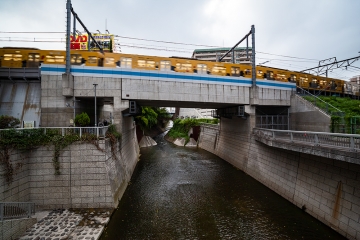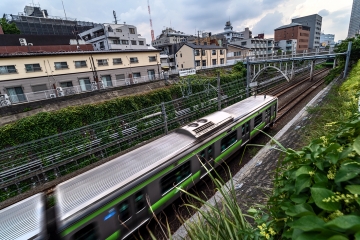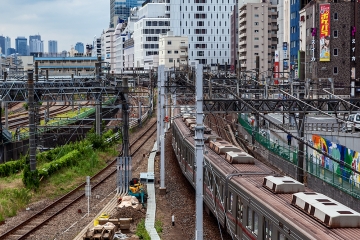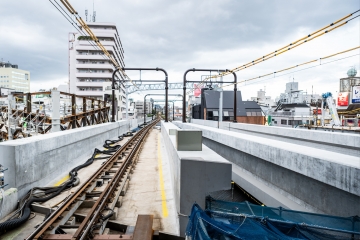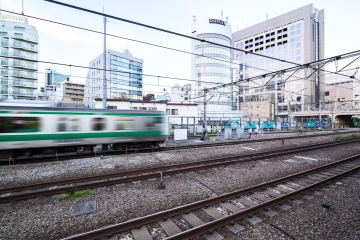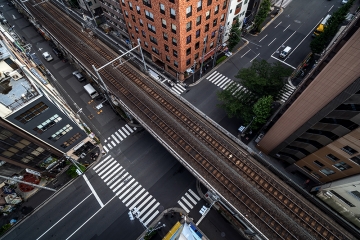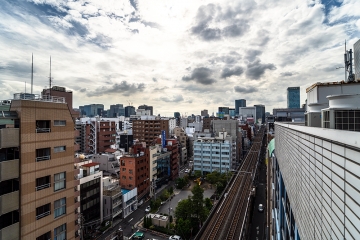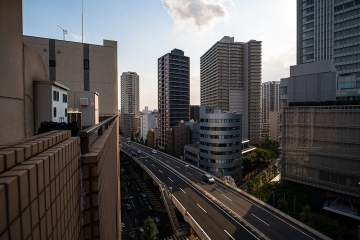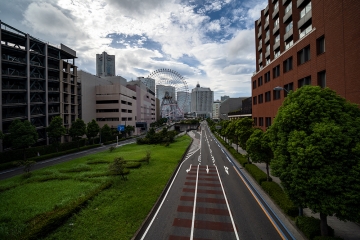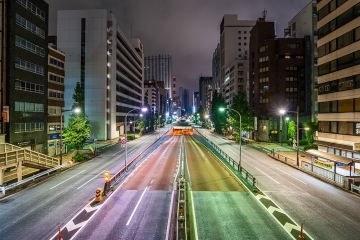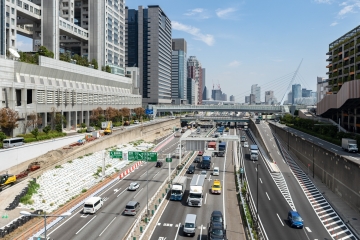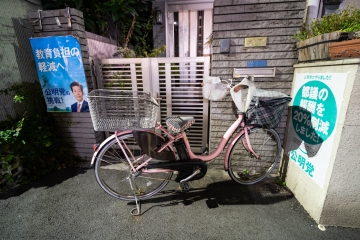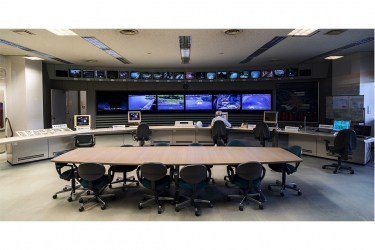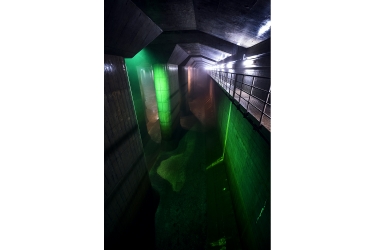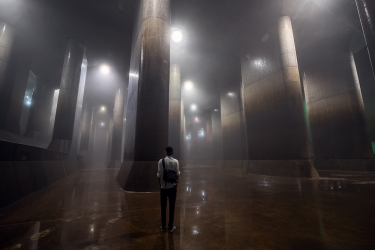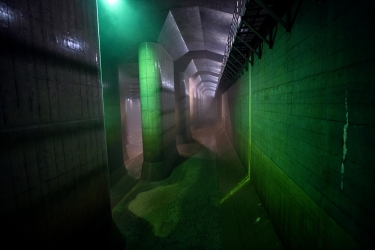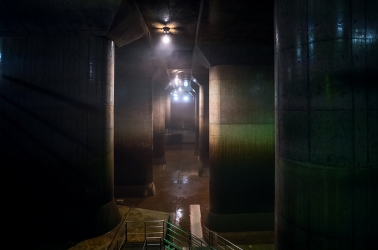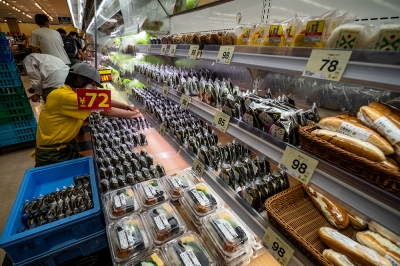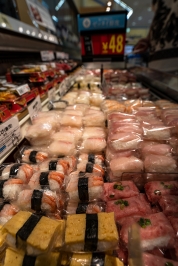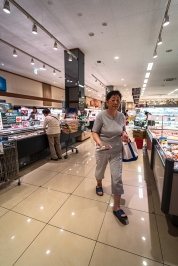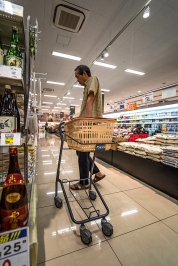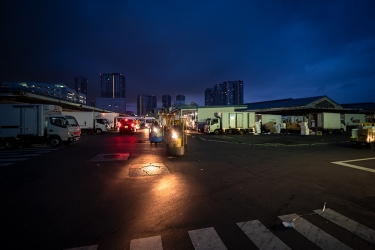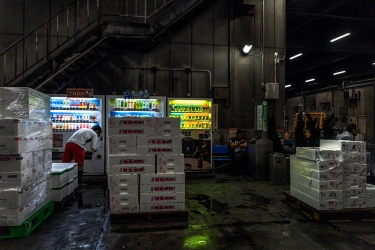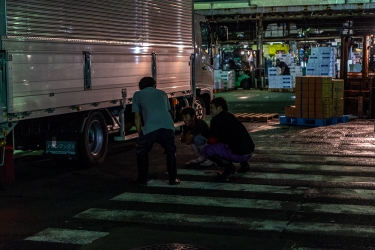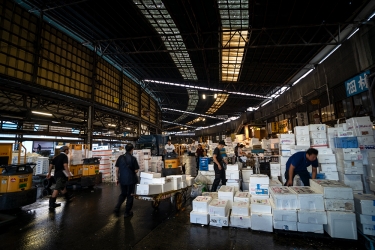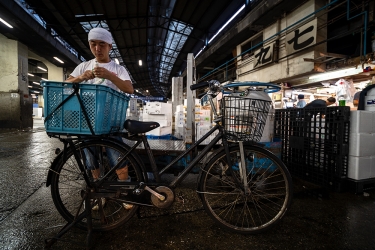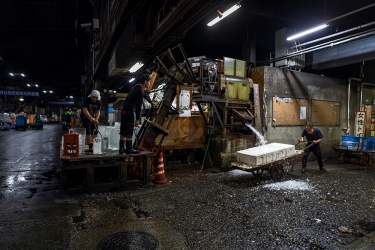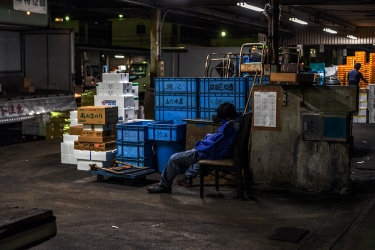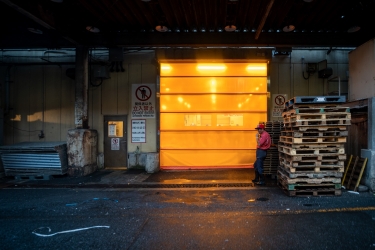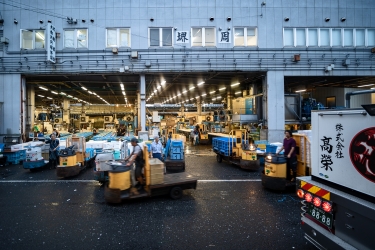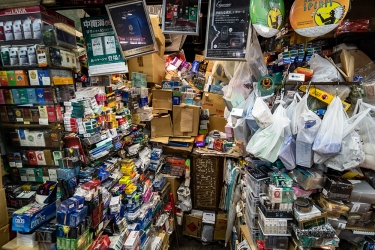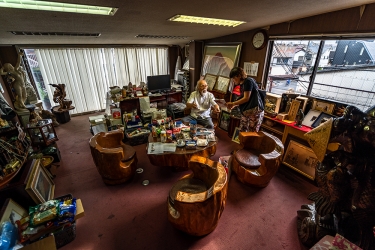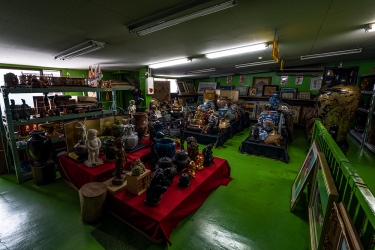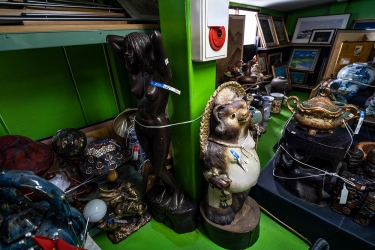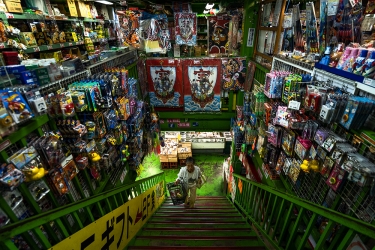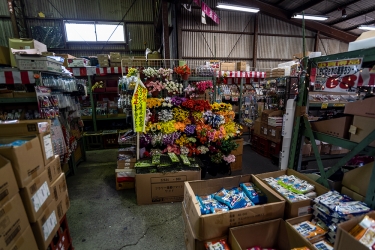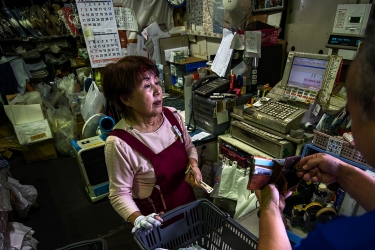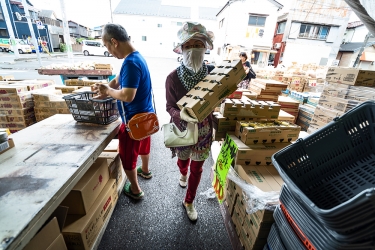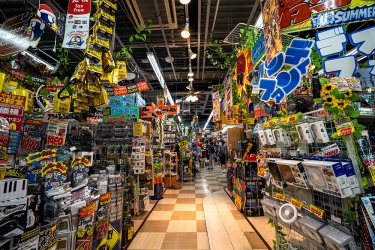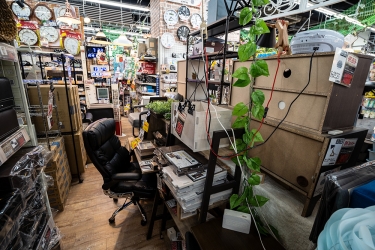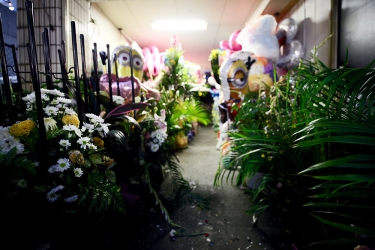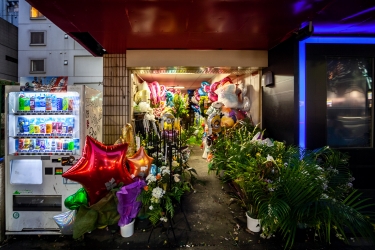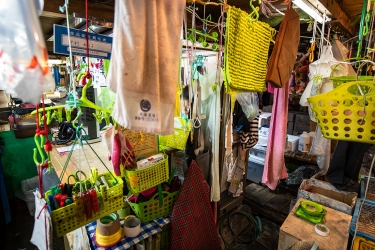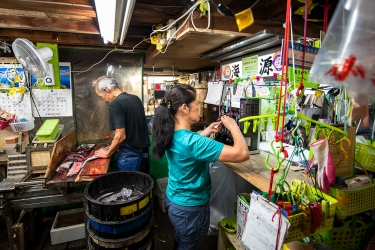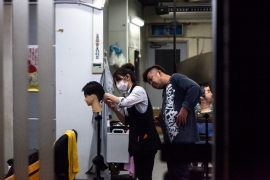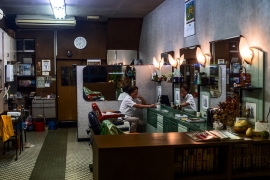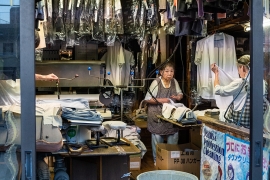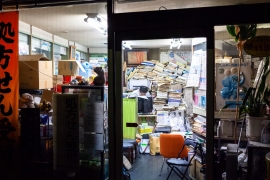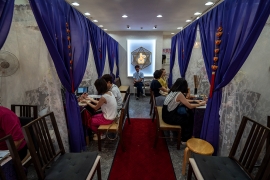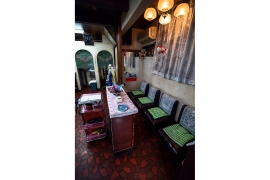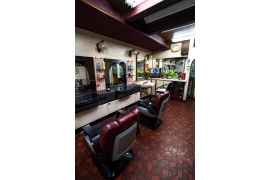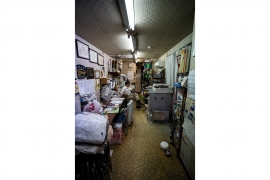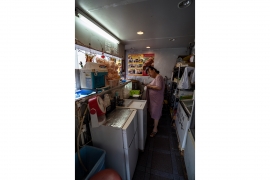1 Introduction and Infrastructure
Table of contents:
- 1.1 Tokyo's Public Infrastructure
- 1.1.2 Railway
- 1.1.3 Motorway
- 1.2 Geography
- 1.2.1 Storm Water Detention
- 1.3 Food supply
- 1.3.1 Supermarkets
- 1.3.2 Fast food trends in 2018
- 1.3.3 Tsukiji fish market
- 1.4 smaller business, dollar stores and more
1.1 Tokyo's public infrastructure
1.1.1 Railway
Tokyo's railway system is one of the most efficient in the world. The trains arrive at the second, inch-perfectly coming to a stand. During peak periods, many trains run every 2 1/2 minutes.
By other train companies, the Japan example is often consulted due to its excellent organization and management. 1987 the state sold out the Japanese National Railway company to private companies. Since then, Tokyo's rail network is run by 7 major carriers. Between them every ride has to be paid separately and except for the Tokyo Metro a long term ticket can't be bought. To take a full round in the inner city circle/get from one side of Tokyo to the other with the JR Yamanote line cost 600 Yen (~5 Euro).
For people, the train is the most common mean of transportation in Tokyo. Depending on the operator, the trains navigate on a vast net of bridge and embankment systems all around the city, in opened tunnels and underground systems or automatically driving on a monorail. All trains are equipped with earthquake early warning system (EEW) which automatically stops the train in the case seismic waves were recorded. The busiest (underground) station is the Shinjuku station, which is the central nod for Tokyo's commuters. Three million of them cross the station every day.
1.1.2 Motorway
Due to a system of elevated freeways transportation works very smoothly for such a gigantic metropolis: By these public freeways cars can easily navigate through the dense centers, reach the outskirts and go to the countryside. They sprawl over rivers, parks and dense residential area. Their existence trace back to the year 1964 when the city government modernized the build city to be ready for the upcoming Olympic summer games. Planning, construction and initial operation were set within a very short period of time.
Regularly at daytime and especially at night,most grounded roads are to be found quiteempty. I personally never encountered a traffic jam. Untypical for those giant metropolises in South East Asia, I also sensed exhaust emissions when roaming through the streets. For small distances, bicycles with a low saddle and a basket are favored.
Even tough there are special Japanese minivan models with small motors and speed maximum of 70 km/h owning a car is not common for Tokyo's middle class. But Tokyo is also famous for it's tuning scene. All around the world, tuners and car enthusiasts love JDM cars.
In residential areas, pedestrians and bicycles have priority in traffic. For an expensive daily parking fee, parking space is available at any time and everywhere. Private parking space with adjustable multilevel-parking-decks are build in dense areas.
1.2 Geography
70% of the land is covered with mountains and forests. Most of the inhabited zones can be found close to the coasts. The archipelago of Japan has a humid climate with cool temperatures in the north and subtropical temperature in the south. Constant strong winds bring fresh air from the ocean.
Japan is situated within a highly active volcanic region. On the colliding edges of four tectonic plates, modest earthquakes are occurring on a daily basis. Strong earthquakes are usually originating deep under the seabed and causing tsunamis (btw. a word of Japanese origin) in their wake.
Historical records document one major earthquake approximately every 70 years. For Tokyo, the next big one is about to come soon. The social implications will be further thematized in chapter 2.
Geographically, Tokyo is in a wild location: Constant strong winds, typhoons, heavy rain and of course the earthquakes.
1.2.1 Storm Water Detention Site:
This underground facility was built to prevent the overflow of six rivers in the northern Tokyo region. The land in this region has sunk below sea level due to the excessive extraction of groundwater in the 1960s and 1970s.
1.3 Food supply
Japan is famous for many culinary specialties. In Tokyo I of course often ate Sashimi, Sushi, Ramen, Udon, Soba. The traditional kitchen is fresh and seasonal, style and ingredients of course refer to the different regions. The ingredients are separately prepared, separately served, and meticulously decorated. A second helping does not exist. There are small tidbits, bites and snacks, instead. Their flavor is differentiated and reduced to only some spices. The taste of traditional Japanese food can be described as mellow and pure.
For a long time, eating meat was a dietary taboo in Japan. Buddhism proscribed the killing of four-legged animals - until Japan adapted various Western technologies and practices during the Meji era. It is said, that the Japanese emperor was impressed by the physical appearance and tallness of the western militaries. For that, he accounted their diet of eating meat. Soon he had his first meal with beef in 1872 and introduced this habitat to his own folks.
1.3.1. Supermarkets
Food is relatively expensive in Japan. In Japan, people averagely spent 25 % of their wages on food. Two kilograms of rice cost about 1000 Yen (in a supermarket). The rice agriculture is highly subsidized and imports sanctioned. Japan’s production capacity of rice only covers half of its own needs. Most of the imported food comes from China.
Mac Donald’s and plastic-packed ready-dishes from the convenient store also make up big parts of the fast food supply. For the cook at home, the highest quality of food comes from the supermarkets. An entire mackerel (30 cm long) costs just the equivalent of € 0.65 in a supermarket in Tokyo. A cucumber (15 cm length) costs € 0.40 and a normal apple costs € 0.90. 10 % percent of world’s fish catch is eaten by one island nation. But the annual number is declining. The average fish & seafood consumption per capita dropped from 66.7 kg in 1991 to 33.5 kg in 2016. The younger generations show more interest in meat and foreign food. Freezers (and the pizzas inside) can’t be found in supermarkets, yet.
1.3.2 Fast food trends in 2018
- Takoyaki (fried octopus meatballs)
- American Dog (sausage, cheese and bun on a stick)
- Grilled chicken and cheese (dish of Korean origin)
1.3.3 Tsukiji fish market
The Tsukiji fish market - which had been relocated in 2019 and now has a new name - is THE place where restaurant chefs buy their fish in the early mornings. While people shouted at the tuna auction very loudly, the rest of the market was an unexpected quiet bustle of electric carts, barrows and trucks.
1.4 smaller business, dollar stores and more
I found Japanese aesthetics in the small shops and businesses in the small streets and old residential areas. Taste, awareness and the perception by some store owners were phenomenal.
